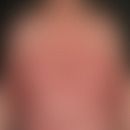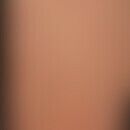Hierfür ist eine Anmeldung erforderlich. Bitte registrieren Sie sich bei uns oder melden Sie sich mit Ihren Zugangsdaten an.
DefinitionThis section has been translated automatically.
Non-specific dermatitis as a side effect of gold therapy (chrysotherapy) in rheumatoid arthritis or other diseases. Incidence up to 53% of patients treated with gold. These are dose-dependent toxic changes which, in contrast to chryssiasis, are reversible.
ClinicThis section has been translated automatically.
Maculopapular, erythematosquamous, lichenoid, vesicular or urticarial skin changes. Often severe pruritus.
You might also be interested in
TherapyThis section has been translated automatically.
If the skin symptoms are less severe, an interruption of the therapy or, if possible, a reduction in dose can significantly improve the skin appearance and pruritus. Only in severe cases it is necessary to remove the gold. Exanthema can persist for months even after discontinuation of therapy. In these cases long-term systemic therapy with glucocorticoids such as prednisolone (e.g. Decortin H) in medium dosages: 20-50 mg/day.
External therapyThis section has been translated automatically.
Blande local therapy e.g. with Lotio alba aq. or weakly effective glucocorticoid-containing topical preparations such as 1% hydrocortisone cream R121 R120.
LiteratureThis section has been translated automatically.
- Eisler R (2003) Chrysotherapy: a synoptic review. Inflamm Res 52: 487-501
- Fritsch P et al (1996) Metal Dermatoses II. dermatologist 47: 400-409
- Nonaka H et al (2003) Gold allergy in Japan. Contact Dermatitis 48: 112-114
Incoming links (3)
Contact dermatitis lymphomatoids; Hydrocortisone cream 0.5-2.0% (w/o); Hydrocortisone cream hydrophilic 0.25/0.5 or 1% (nrf 11.36.);Outgoing links (11)
Chrysiasis; Dermatitis; Glucocorticosteroids; Glucorticosteroids topical; Hydrocortisone; Hydrocortisone cream 0.5-2.0% (w/o); Hydrocortisone cream hydrophilic 0.25/0.5 or 1% (nrf 11.36.); Prednisolone; Pruritus; Rash; ... Show allDisclaimer
Please ask your physician for a reliable diagnosis. This website is only meant as a reference.




